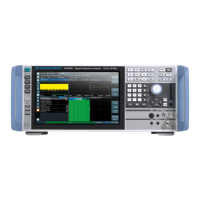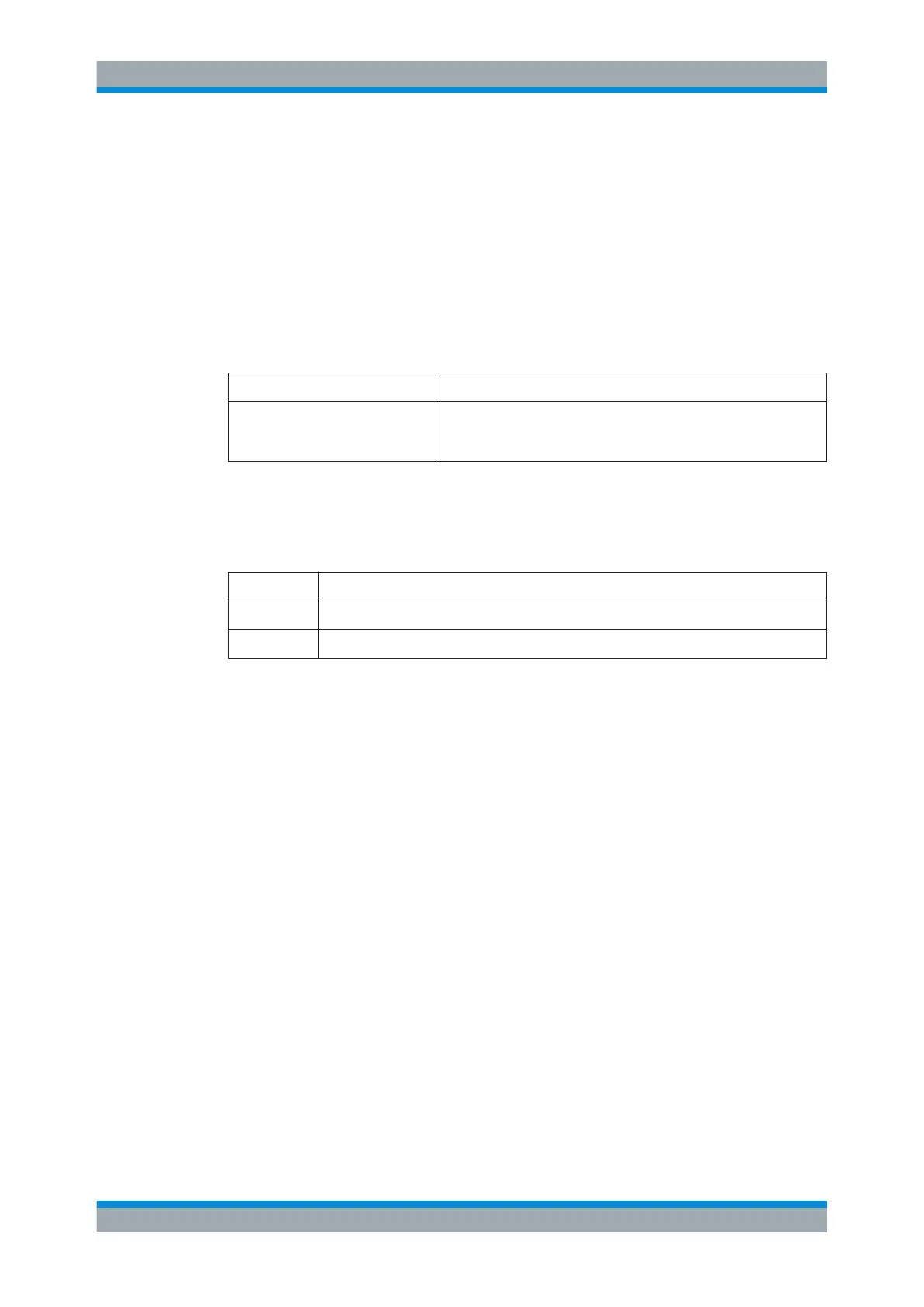Measurements and Results
R&S
®
FSVA3000/ R&S
®
FSV3000
165User Manual 1178.8520.02 ─ 01
Remote command:
[SENSe:]POWer:ACHannel:BANDwidth[:CHANnel<ch>] on page 755
[SENSe:]POWer:ACHannel:BANDwidth:ACHannel on page 754
[SENSe:]POWer:ACHannel:BANDwidth:ALTernate<ch> on page 755
Channel Spacings
Channel spacings are normally defined by the transmission standard but can be
changed.
If the spacings are not equal, the channel distribution in relation to the center frequency
is as follows:
Odd number of Tx channels The middle Tx channel is centered to center frequency.
Even number of Tx channels The two Tx channels in the middle are used to calculate the fre-
quency between those two channels. This frequency is aligned to
the center frequency.
The spacings between all Tx channels can be defined individually. When you change
the spacing for one channel, the value is automatically also defined for all subsequent
Tx channels. This allows you to set up a system with equal Tx channel spacing quickly.
For different spacings, set up the channels from top to bottom.
Tx1-2 Spacing between the first and the second carrier
Tx2-3 Spacing between the second and the third carrier
… …
If you change the adjacent-channel spacing (ADJ), all higher adjacent channel spac-
ings (ALT1, ALT2, …) are multiplied by the same factor (new spacing value/old spacing
value). Again, only enter one value for equal channel spacing. For different spacing,
configure the spacings from top to bottom.
For details, see Chapter 7.3.6.2, "How to Set Up the Channels", on page 182
Remote command:
[SENSe:]POWer:ACHannel:SPACing:CHANnel<ch> on page 756
[SENSe:]POWer:ACHannel:SPACing[:ACHannel] on page 756
[SENSe:]POWer:ACHannel:SPACing:ALTernate<ch> on page 756
Limit Check
During an ACLR measurement, the power values can be checked whether they
exceed user-defined or standard-defined limits. A relative or absolute limit can be
defined, or both. Both limit types are considered, regardless whether the measured lev-
els are absolute or relative values. The check of both limit values can be activated
independently. If any active limit value is exceeded, the measured value is displayed in
red and marked by a preceding asterisk in the result table.
Channel Power and Adjacent-Channel Power (ACLR) Measurement

